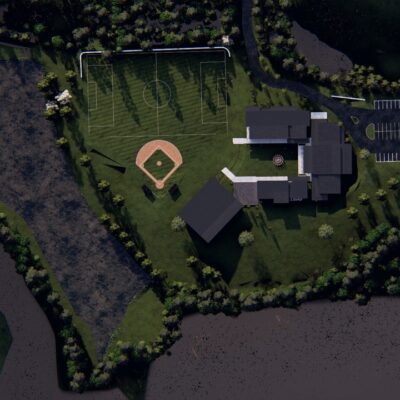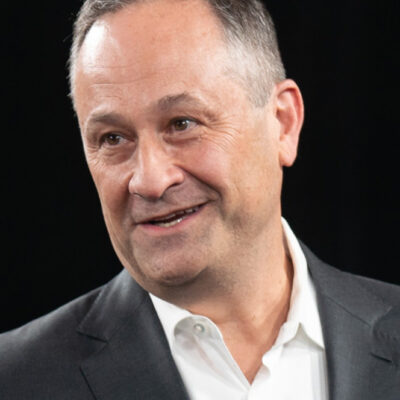Charlottesville may be a hotbed of green architecture—after all, it’s home to William (Cradle to Cradle) McDonough and legions of his followers—but it lacks actual green developments on a large scale. That’s the contention of Chris Schooley, who’s leading the charge by local development company Stonehaus to create a sustainable community nearly out of thin air. The 675-unit Belvedere development will break ground on May 10, beginning a five- to six-year buildout process. And when it’s done, it’s meant to look pretty different than your standard McMansion-lined subdivision.
“We can make money and do a really good thing,” Schooley says. Renderings are spread out before him on a conference table, showing the standard elements of mixed-use development—retail, offices and a range of housing types—arranged over the 207-acre site off Rio Road East. More unusual are the organic farm and “civic core” that accompany them. The ambition for Belvedere is not only to employ new urbanist principles of fostering community (for example, by making it easy for residents to walk to a coffeeshop) but also to meet green-building standards with low-VOC paint, rainwater harvesting and other measures.
 Prefer green to beige? The Belvedere development aims at a subdivision-shunning, organic-munching crowd. |
Before there was Belvedere the sustainable community, there was plain Belvedere. Stonehaus has owned the location since 1998, and its development plans have only turned green over the last few years as sustainability exploded into mainstream parlance. It’s a goal that Schooley says will help sell lots in a slowing real estate market—and one that has developers envisioning Belvedere residents’ lives in fine detail. Schooley describes future scenes that depend on technology as much as an old-fashioned neighborhood paradigm: kids waiting for the school bus in a central pickup near the “town hall” (actually more like a pavilion), while their telecommuting parents monitor them via webcams and super-fast Internet connections.
Prices for the EarthCraft-certified homes will range widely, from cottages in the low- to mid-$200s to single-family homes costing over $600,000. Belvedere will have arts wellness programs, a Montessori school and the kind of destination retail that represents “the type of thing we believe in,” Schooley says. “We need our Whole Foods.”
“I hope they will have created an urbane place, a center of gravity,” says Chris Hays, whose design firm Hays + Ewing Design Studio won a contest last year for the design of the civic core. That’s a task that even Schooley admits is a tall order: creating “a neighborhood, not a subdivision” is up to residents as much as developers, he says. “When the houses have been painted five times, some of the landscaping has died, kids have chalk drawings on the sidewalks—that’s when it’s truly a community.”
C-VILLE welcomes news tips from readers. Send them to news@c-ville.com.





